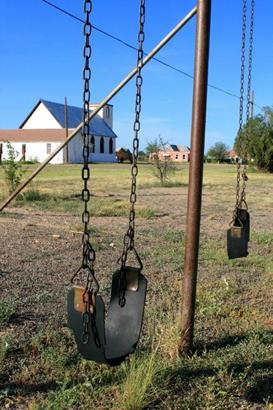The schools we knew. (original) (raw)
| by Bob Bowman |  |
|---|
From the 1800s to shortly after World War II, East Texas was made up mostly of farming communities--small in size, but big in community spirit.
The communities were the world to their residents. They couldn�t run to places like Tyler, Longview and Paris, like people do today. A trip in a mule-drawn wagon took hours away from farming where the farmers (and the mules) needed to be.
Some communities had a small general store and a church, but almost every community had a schoolwhich acted as the glue that held each settlement together.
�Good Heaven! what sorrows gloomed that parting day
That called them from their native walks away��
Photo courtesy Stephen Michaels, 2008
The schoolswere dictated by the size of the community and by the distance the kids could be expected to walk. School buses had not yet arrived.
Most schoolshad only two or three rooms with wooden floors and were warmed during cold weather by a wood-burning potbelly stove in each classroom.
Hot days were made cooler only if a breeze blew through the windows. A rope was strung out one window and hitched to a bell hanging on a post. The rope was yanked by a teacher to call the classes to order and end the recess.
One such school stood at Hickory Grove in Anderson County, not far from the Neches River. The community had a church, a graveyard (Muse Cemetery), and a store or two down the road.
Standing behind the school were two outhouses, one for the boys and one for the girls. Recess meant mumblety-peg and wolf-over-the river or, if there was enough ground without trees, baseball games were played by both girls and boys.
The schoolsoften provided entertainment for the community--usually plays performed by students, some with homemade costumes.
Each student carried a lunch to school, sometimes in a syrup bucket filled with cornbread, boiled eggs, and a piece of fried chicken. That continued until Franklin D. Roosevelt�s commodities program supplied food to the county schools.
Each school usually had a well that supplied water. Some even had a drinking fountain.
The drinking fountain of the old school in Lagarto
TE Photo, February 2006
Many of East Texas� small farming communities began to fade away when their schools were consolidated with those in other towns.
If you travel across East Texas, you can still find some reminders of the towns, often abandoned buildings that once served as schools and stores--places like Dextra in Nacogdoches County and Denning in San Augustine County.
October 11, 2009 Column
A weekly column syndicated in 109 East Texas newspapers
Copyright Bob Bowman


